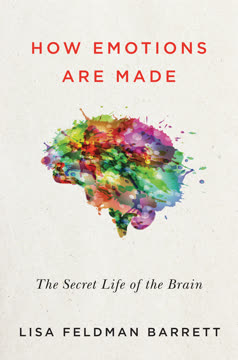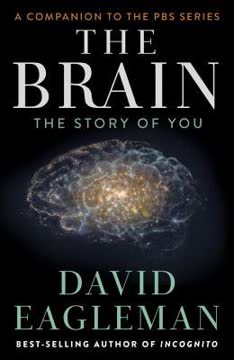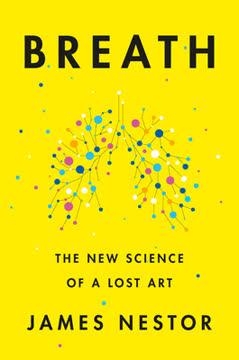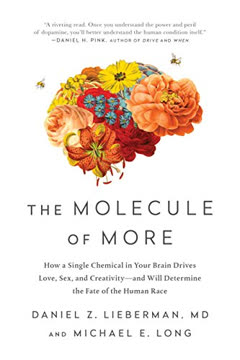Key Takeaways
1. Dopamine drives desire and fuels our pursuit of "more"
Dopamine doesn't come equipped with a conscience. Rather, it is a source of cunning fed by desire.
The dopamine desire circuit evolved to promote behaviors that lead to survival and reproduction. It creates feelings of wanting and anticipation, motivating us to seek out food, sex, and other resources. However, dopamine is about wanting, not liking. It produces a feeling of anticipation that is never fully satisfied, always pushing us to want more.
Dopamine's role in motivation:
- Triggers feelings of desire and excitement when we encounter potentially rewarding stimuli
- Focuses our attention on future possibilities rather than present experiences
- Creates a "reward prediction error" when we encounter unexpected rewards, reinforcing reward-seeking behavior
- Drives us to pursue novelty and change, even when we're objectively satisfied
This constant pursuit of "more" served our ancestors well in resource-scarce environments. In modern abundance, however, it can lead to restlessness, addiction, and an inability to appreciate what we have.
2. Love transitions from passionate to companionate through neurochemical shifts
According to anthropologist Helen Fisher, early or "passionate" love lasts only twelve to eighteen months.
The chemistry of love changes as relationships progress. Early passionate love is driven by dopamine, creating intense focus, energy, and euphoria. This dopamine-fueled state evolved to motivate mate-seeking and bonding but is not sustainable long-term.
Stages of love and their neurochemical bases:
- Passionate love: Driven by dopamine and norepinephrine, creating excitement and obsessive focus
- Companionate love: Mediated by oxytocin, vasopressin, and endorphins, promoting bonding and contentment
- Transition period: Often marked by disappointment as dopamine levels normalize
For relationships to endure, couples must successfully transition from the dopamine-driven passion to the more stable, H&N-mediated companionate love. This shift allows for deeper emotional connection and long-term satisfaction, though it lacks the intense "high" of early romance.
3. Addiction hijacks the brain's reward system, overwhelming rational decision-making
Giving in to craving doesn't necessarily lead to pleasure because wanting is different from liking. Dopamine makes promises that it is in no position to keep.
Addiction's neurological basis lies in dopamine's ability to create intense wanting, even in the absence of pleasure. Addictive substances and behaviors trigger dopamine release far beyond what natural rewards produce, creating a cycle of craving and disappointment.
Key aspects of addiction:
- Hijacks the brain's natural reward system
- Creates a disconnect between wanting and liking
- Leads to tolerance, requiring increasing stimulation for the same effect
- Impairs the prefrontal cortex, weakening impulse control and decision-making
- Often co-occurs with mental health issues due to shared neurological vulnerabilities
Treatment approaches like cognitive behavioral therapy, motivational enhancement therapy, and 12-step programs work by engaging different brain circuits to counter addictive behaviors. They aim to strengthen impulse control, build motivation for change, and create supporting social structures.
4. Creativity and mental illness share dopaminergic roots
Creativity is the power to connect the seemingly unconnected.
The dopaminergic link between creativity and mental illness explains why highly creative individuals often experience mood disorders or psychosis. Both creativity and certain mental illnesses involve heightened dopamine activity, which can lead to novel connections and ideas but also to disordered thinking.
Characteristics of the creative/psychotic mind:
- Low latent inhibition: Difficulty filtering out irrelevant stimuli
- Divergent thinking: Ability to generate multiple, unique ideas
- Heightened pattern recognition: Seeing connections others miss
- Intense focus and motivation: Driven pursuit of creative goals
- Emotional sensitivity: Heightened responsiveness to experiences
This connection explains why periods of intense creativity often alternate with episodes of depression or mania in artists and innovators. While not all creative people have mental illness (and vice versa), understanding this link can help in managing creative temperaments and supporting those with bipolar disorder or schizophrenia.
5. Political ideologies reflect differences in dopamine and H&N neurotransmitter activity
Liberals often refer to themselves as progressives, a term that implies constant improvement. Progressives embrace change.
Neurochemical underpinnings of political views suggest that liberals tend to have higher dopamine activity, while conservatives show greater influence from H&N neurotransmitters. This difference manifests in contrasting approaches to social and political issues.
Liberal vs. Conservative neurochemical tendencies:
- Liberals: Higher dopamine activity
- More open to change and novelty
- Focus on future possibilities and progress
- Abstract, big-picture thinking
- Conservatives: Greater H&N influence
- Preference for stability and tradition
- Focus on immediate, concrete concerns
- Emphasis on personal relationships and local community
These tendencies influence policy preferences, with liberals more likely to support large-scale government programs and social change, while conservatives favor maintaining traditional structures and individual responsibility. Understanding these neurochemical differences can promote empathy and more productive political discourse.
6. Dopamine propels human progress but risks environmental and social consequences
As a species we have become far more powerful than we were when our brains first developed. Technology develops fast while evolution is slow.
The double-edged sword of dopamine-driven progress has led to remarkable technological and social advancements but also created unprecedented global challenges. Our dopaminergic pursuit of "more" drives innovation but can lead to environmental destruction, social upheaval, and potential existential risks.
Dopamine's role in human advancement and risk:
- Fuels scientific discovery and technological innovation
- Drives economic growth and material abundance
- Motivates exploration and expansion of human knowledge
- Can lead to overconsumption and environmental degradation
- May contribute to social inequality and cultural disruption
- Poses risks through advanced technologies like AI and genetic engineering
Balancing the benefits of dopamine-driven progress with its potential dangers is a key challenge for humanity. It requires developing new social, political, and technological systems that can harness our innovative drive while mitigating its negative consequences.
7. Balancing dopamine and H&N neurotransmitters is key to fulfillment and well-being
To live a good life, we need to bring them back into balance.
Achieving neurochemical harmony between dopamine and H&N systems is crucial for both individual happiness and societal well-being. This balance allows us to pursue goals and growth while also appreciating present experiences and maintaining meaningful relationships.
Strategies for balancing dopamine and H&N activity:
- Mindfulness practices: Increase awareness of present-moment experiences
- Gratitude exercises: Enhance appreciation for what we have
- Goal-setting with reflection: Combine future-oriented action with present satisfaction
- Nurturing relationships: Engage H&N systems through social bonding
- Pursuing mastery: Find fulfillment in skill development and competence
- Alternating novelty and routine: Balance excitement with stability
- Connecting with nature: Engage sensory experiences and natural rhythms
By consciously cultivating this balance, individuals can experience greater fulfillment, resilience, and overall life satisfaction. On a societal level, promoting this balance can lead to more sustainable progress and healthier communities.
Last updated:
FAQ
What's The Molecule of More about?
- Focus on Dopamine: The book explores dopamine's role in driving human behavior, emotions, and creativity, influencing desires, motivations, and relationships.
- Connection to Human Experience: It links dopamine to love, addiction, creativity, and politics, showing how this molecule shapes our lives.
- Scientific Insights: Authors Daniel Z. Lieberman and Michael E. Long use scientific research to explain dopamine's complex effects on our lives.
Why should I read The Molecule of More?
- Understanding Human Behavior: Gain insights into why we desire what we don’t have and how it affects happiness and relationships.
- Practical Applications: Apply knowledge to improve relationships, manage addictions, and enhance creativity.
- Engaging Narrative: The authors present scientific concepts in an accessible manner, appealing to both science enthusiasts and general readers.
What are the key takeaways of The Molecule of More?
- Dopamine Drives Desire: Dopamine is about desire and anticipation, motivating us to seek new experiences and rewards.
- Love Evolves Over Time: Relationships transition from dopamine-driven passion to companionate love, requiring adaptation.
- Addiction and Control: Balancing desire with control is crucial for long-term well-being, as dopamine can lead to addiction.
How does dopamine affect love and relationships in The Molecule of More?
- Initial Passion: Dopamine fuels intense attraction and desire at the start of relationships.
- Fading Connection: As novelty fades, dopamine-driven passion can diminish, leading to a stable but less intense love.
- Transition to Companionate Love: Successful relationships shift to H&N neurotransmitters, promoting satisfaction and emotional connection.
What role does dopamine play in addiction according to The Molecule of More?
- Desire Over Pleasure: Dopamine drives the desire for substances, leading to compulsive behavior despite negative consequences.
- Impact on Decision-Making: Addiction alters the brain's reward system, making it hard to resist cravings.
- Treatment Insights: Understanding dopamine's role can inform treatment strategies addressing both desire and underlying emotional issues.
How does The Molecule of More explain creativity and madness?
- Link to Dopamine: Heightened dopamine activity is associated with creative thinking and mental health disorders.
- Creative Minds: High dopamine levels can lead to creativity but also mental health challenges.
- Understanding Risks: The book provides insights into harnessing creativity while managing risks of high dopamine levels.
What is the significance of the "Here & Now" (H&N) neurotransmitters in The Molecule of More?
- Present-Focused Experience: H&N neurotransmitters, like serotonin and oxytocin, are responsible for enjoying present experiences.
- Balancing Dopamine: Balancing dopamine-driven desires with H&N experiences is crucial for long-term happiness.
- Role in Companionate Love: H&N neurotransmitters facilitate the transition to a deeper, stable form of love.
How does The Molecule of More address the concept of self-control?
- Willpower as a Resource: Willpower is a limited resource that can deplete, leading to impulsive decisions.
- Strategies for Improvement: Self-control can be strengthened through cognitive behavioral therapy and motivational enhancement therapy.
- Importance of Environment: Managing environmental cues can improve self-control and lead to healthier choices.
What is the significance of low latent inhibition discussed in The Molecule of More?
- Definition of Low Latent Inhibition: It refers to a reduced ability to filter out irrelevant stimuli, leading to heightened awareness.
- Connection to Creativity: Individuals with low latent inhibition may excel in creative fields due to unique insights.
- Risks Involved: While enhancing creativity, it can also contribute to mental health issues like schizophrenia.
How does The Molecule of More relate dopamine to creativity?
- Dopamine as a Creative Driver: Dopamine fuels the creative process by encouraging exploration and novel ideas.
- Link to Mental Illness: High dopamine levels can lead to creative breakthroughs and mental health challenges.
- Practical Implications: Understanding this relationship helps harness creativity while being mindful of risks.
How does the book address the impact of technology on dopamine levels?
- Technology as a Dopamine Amplifier: Modern technology, especially social media, can exacerbate dopamine-driven behaviors.
- Virtual Reality's Allure: Virtual reality provides intense dopamine stimulation, potentially reducing real-world interactions.
- Need for Moderation: Balancing technology use with real-life connections is emphasized for well-being.
What are the implications of dopamine-driven behavior for society, as discussed in The Molecule of More?
- Political Ideologies: Dopamine influences political beliefs, with liberals often embodying change-oriented mindsets.
- Environmental Challenges: Unchecked dopamine-driven consumption could lead to environmental degradation.
- Call for Awareness: The book encourages mindfulness of dopamine-driven desires to foster a healthier society.
Review Summary
The Molecule of More receives mostly positive reviews for its engaging exploration of dopamine's role in human behavior. Readers appreciate the accessible explanations of complex neuroscience and the book's insights into various aspects of life, from love to politics. Some criticize oversimplification and lack of scientific rigor, while others find it eye-opening and transformative. The book's examination of dopamine's influence on motivation, creativity, and decision-making is widely praised. However, opinions vary on the depth and credibility of certain claims, particularly in later chapters.
Similar Books










Download PDF
Download EPUB
.epub digital book format is ideal for reading ebooks on phones, tablets, and e-readers.




